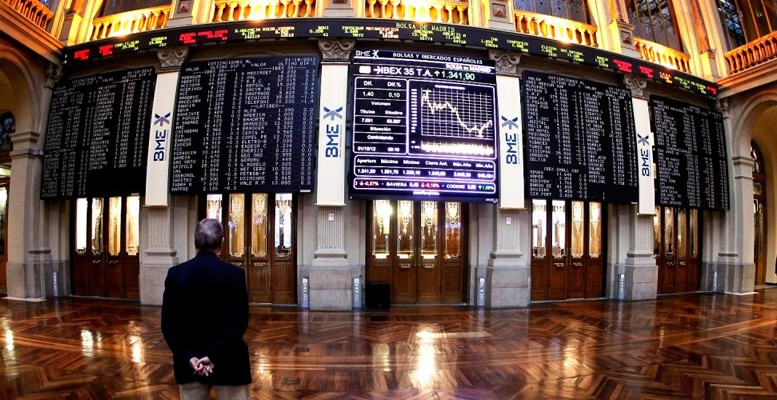At end-2015, Spanish banks and savings banks had barely a quarter of the holding in Spanish companies’ shares it had in 1992, the first year in the historical series elaborated by BME’s Rearch Department. The current share of 3.6% is 12 percentage points lower than that in 1992 and 5.8 percentage points below the level in 2007, at the start of the global financial crisis. This performance reflects the important structural changes in the corporate segment of the Spanish economy over the last 25 years, as well as the impact of the crisis in more recent times.
In 2015, banks participation in the stock market fell 0.7 percentage points from a year earlier, in part as a result of the decline in the share price of some of the listed companies in which the banks hold stakes. But it was also due to the banks’ ongoing net divestment of listed shares with the aim of strengthening their liquidity and capital position to deal with the complicated situation following the financial crisis.
The last available information from the European Union, which dates back to 2012, shows the banks hold 3% of the value of shares in the European stock markets.
Collective investment institutions, insurers and other financial firms maintain their position
Collective Investment Institutions (investment funds, pension funds and SICAVs), as well as insurance companies and other non-banking financial firms increased their relative position in Spanish equities in 2015 to 7.9%, one-tenth of a percentage point more than a year ago.
In the case of Spanish investment funds, end-2015 data from the Stock Market Regulator shows a slight increase in the portfolio of listed Spanish stocks to over 8.750 billion euros, 300 million more than a year earlier. The figure is still far off the almost 14 billion euros reached in 2006. Pension funds’ position in Spanish equities was also reduced at the end of 2015, although it grew for the third year in a row to just below 9 billion euros, up 5% from a year ago. The SICAVs reduced their holdings of Spanish stocks by 7% to 3.091 billion euros, while the insurers saw their participation increase slightly.
Non-financial companies sharply increase their participation
Non-financial companies registered the biggest increase in stock holdings in 2015. Their participation in the value of Spanish listed companies rose 1.8 percentage points to 18.9% from a year earlier. They remain the third largest holders of Spanish listed companies and the increase in 2015 followed 4 consecutive years of declines which began in 2010.
But the 2015 level of 18.9% is far off the 24-26% reached between 2005 and 2010. This is the result of the multitude cross shareholdings amongst listed companies.
AENA and the increase in the Public Administration’s position
The Public Administration’s position (acquired via a variety of state organisations or affiliated entities) raised its holding of Spanish listed stocks by one percentage point to 2.9%, the highest percentage in the last 18 years. This was due to the IPO and partial privatisation of aiports operator AENA which took place in the first quarter of 2015.
After that operation, the Public Administration’s participation in the company stood at 51%, valued at just over 8.063 billion euros at end-2015. This meant that the public sector’s portfolio of Spanish listed companies increased over 60% to nearly 19.5 billion euros.
Slight fall in foreign investors’ participation which remains the highest
The latest data on foreign investors’ participation in listed Spanish stocks is 43%, representing the second highest level in the historical series. The current participation is almost 12 percentage points higher than that of 1992. It clearly shows the extensive overseas exposure of the Spanish stock exchange, but even more so of Spanish listed companies which have succeeded in increasing their visibility in the stock market and in obtaining overseas funding to grow.
After seven years of a deep financial and economic global crisis, which was further aggravated in Europe by the sovereign debt crisis which gripped Spain particularly in 2011 and the first half of 2012, foreign investors’ confidence in Spanish listed companies has remained. In 2014, the participation hit a record high of 43% and in 2015 it recorded a second record high of 42.3%, seven-tenths of a percentage point less than a year earlier.
In the EU, according to the most recent statistics available, the participation of foreign investors in listed companies was 38% in 2012.
Since these statistics were first compiled in 1992, the participation of non-residents has always been over 30%.
Households’ participation falls 1.8% in one year
After three consecutive years of increase, Spanish households’ participation fell slightly in 2015 to 24.4% from 26.2% a year earlier.
The listed companies’ generous shareholder remuneration policy is undoubtedly behind households’ interest in stocks over the last few years. This remuneration has increasingly included scrip dividends or the option to be paid in shares instead of cash (5), which the majority of shareholders have taken up. In 2015, the volume of scrip dividends has begun to decline.
In the afore-mentioned report published by the European Commission about the ownership of listed shares in the EU in 2012, European households’ participation was 11%. The relative figure for Spain corresponding to 2015 (24.4%) is much higher than the whole of Europe and countries like France (11%), the UK (11%) or Germany (9%).
*Image: Archive.





